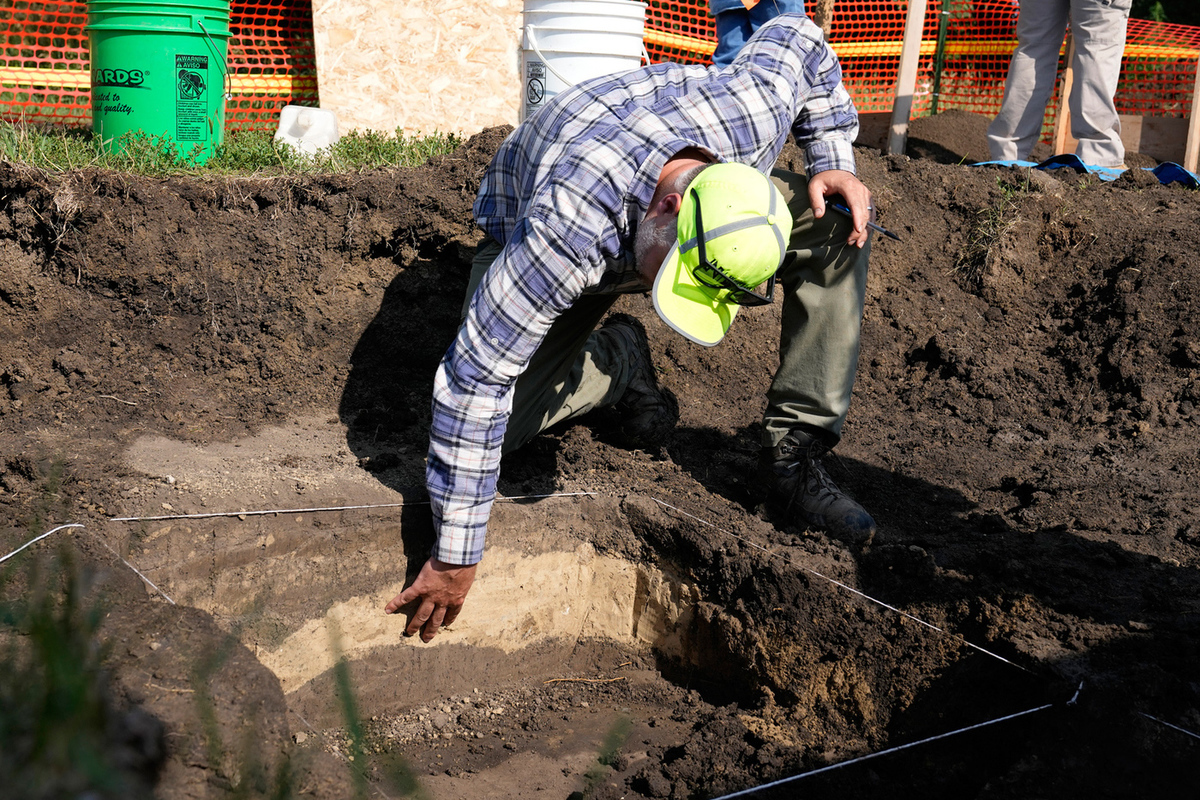Archaeologists have begun excavating the burial of dozens of children in an American school
[ad_1]

Archaeologists are digging for children who died at a Native American boarding school in Nebraska. A century ago, dozens of children died at the school, but their burial sites have been lost to time.
Archaeologists have begun excavating the remains of children who died at a boarding school for Native Americans in Nebraska. The burial sites of dozens of children who died at the American Genoa Indian Industrial School have been lost for decades, a mystery that archaeologists seek to unravel as they excavate a field that was part of a sprawling campus a century ago.
Genoa, Nebraska, was part of a national system of more than 400 Native American boarding schools that separated Native children from their families and cut them off from their heritage, the Associated Press reported.
Newspaper clippings, notes and a letter from a student indicate that at least 86 students died at the school, usually due to diseases such as tuberculosis and typhoid fever, while at least one death was blamed on accidental shooting.
For decades, residents of the tiny community of Genoa, with the help of Native Americans, explorers and government officials, have searched for the location of a forgotten cemetery where the bodies of up to 80 students are believed to be buried.
The researchers identified the names of 49 children, but could not find names for 37. The bodies of some of these children were returned to their homes when they died, but others are believed to have been buried on the school grounds in a long-forgotten location.
The school, located about 90 miles (145 km) west of Omaha, opened in 1884 and during its heyday was home to almost 600 students from over 40 tribes across the country. The establishment closed in 1931 and most of the buildings were demolished a long time ago.
As part of an effort to find the cemetery last summer, dogs trained to recognize the faint smell of decaying remains searched the area and reported finding a burial site on a narrow patch of land bordering a farmer’s field, railroad tracks and a canal.
A team using ground-penetrating radar also showed an area last November that matched the graves, but there’s no guarantee until researchers can dig into the ground, said Dave Williams, a Nebraska archaeologist.
This process is expected to take several days.
“We’re going to dismantle the soil and first see if what the GPR shows actually looks like a grave,” Williams said. “And once we’ve sorted that out, we’ll film the facility and determine if there are any other human remains in the area.”
If human remains are found during excavations, the state archeology department will continue to work with the Nebraska Commission on Indian Affairs to decide what to do next. The remains could be reburied in a field and created a memorial, or exhumed and returned to the tribes, Williams said.
The DNA could point to the region of the country each child was from, Williams said, but narrowing that down to individual tribes would be tricky.
The federal government is taking a closer look at the boarding school system. The U.S. Department of the Interior, led by Secretary of State Deb Haland, a member of New Mexico’s Laguna Pueblo and First Native American Cabinet Secretary, released an initial report in 2022 and is working on a second report with more details.
At least 500 children have died in some schools, but this number is expected to reach thousands or tens of thousands as research continues.
Sunshine Thomas-Bear, a member of the Winnebago tribe and its director of cultural preservation, visited the archaeological site on Tuesday. She said that her father was a survivor of a Native American boarding school and that the trauma of those institutions was passed down from generation to generation.
“I want to help heal my people, let them know what I’m watching. If anything is found, I will report it,” Thomas-Bear said. “All this is under development. It’s just one single step.”
[ad_2]
Source link








